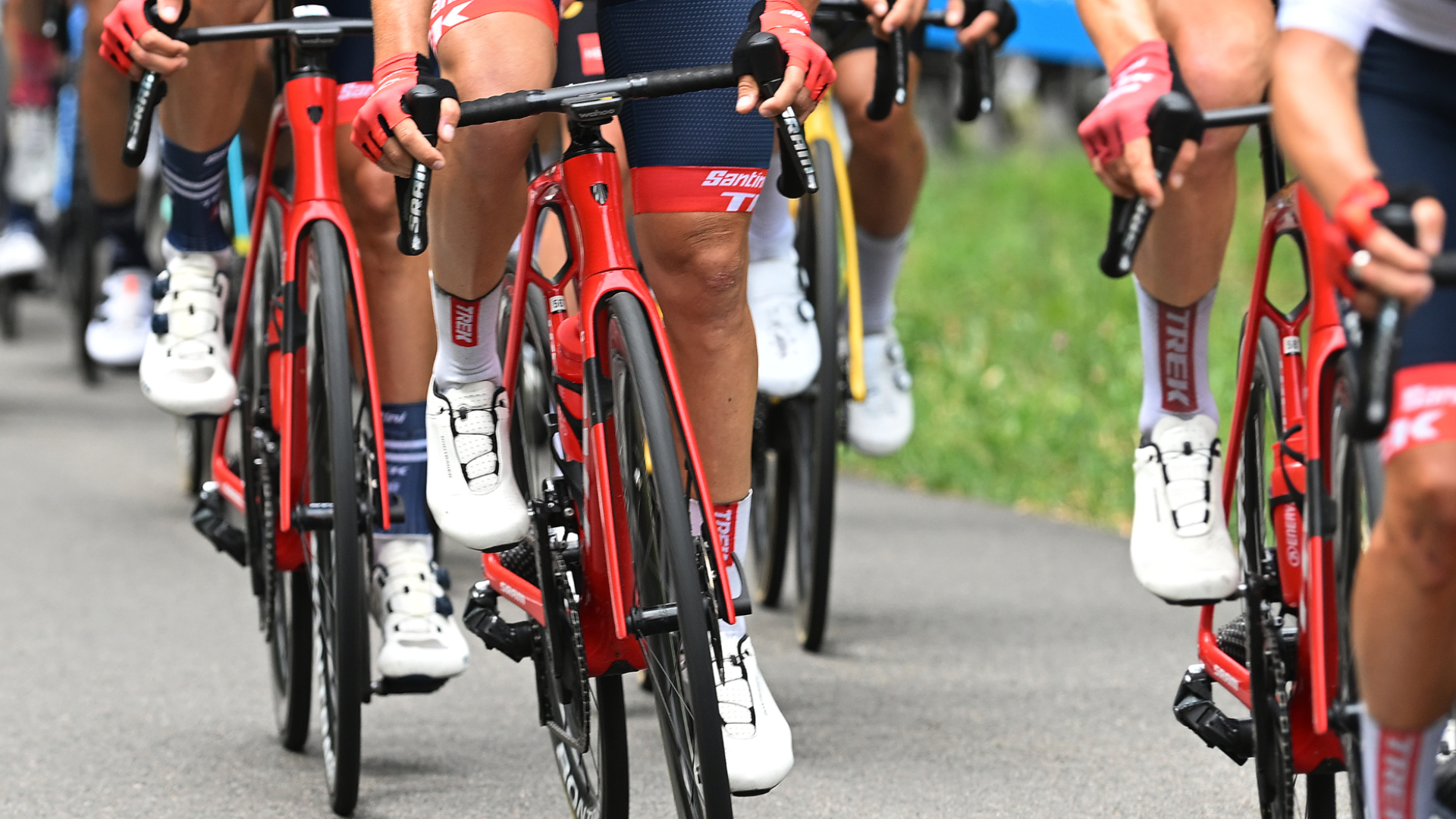Will the new Trek Madone revolutionise bike design?
The unreleased new frameset spotted at the Dauphine features a radical seat tube with a hole through it and a hovering seatpost

While Wout van Aert made plenty of headlines by winning stage one of the Criterium du Dauphine, for tech heads it was the sighting of a new Trek Madone that stole the show.
Traditional timelines would suggest that the new model will be due for an official launch ahead of this year’s Tour de France but is being raced by a few members of the Trek-Segafredo team this week. The French website MatosVelo.Fr were eagle-eyed enough to spot the redesigned Madone in the pits ahead of stage and its pictures show a radical departure from the previous iteration.
The most significant change is found at the junction of the frame’s seat tube, top tube and seatstays. Here, the seat tube splits into two and joins the stays, which then connect to the top tube, essentially creating a hole where the seat tube would normally be. The top tube then continues towards the rear, leaving the seatpost hovering above thin air.
Trek remains tight-lipped at the moment, so any design rationale is purely speculative. However, this new design means the IsoSpeed system is no more. That may suggest that the eye-catching seat tube-top tube-seatstays arrangement has been created to smooth out the bumps, presumably using frame flex to achieve this. Given that the Madone is Trek’s aero race bike, it’s likely that there are some drag-reducing benefits here too. The purported name of the design, IsoFlow, also suggests that it’s an aero-sharpened replacement for the comfy decoupler.

And it’s improved aerodynamics that seem to be at the heart of the Madone’s other notable changes. While Specialized has sought to add aero advantages to its do-it-all race bike, the Tarmac SL7, making the dedicated Venge obsolete in the process, Trek has chosen to double-down on the Madone’s aero credentials. In turn, this ensures its race bike line-up is clearly defined, with the Madone sitting alongside the featherweight Emonda and the cobble-defying Domane.
Both the bottom bracket area and the head tube look to have a significantly larger surface area than the existing Madone. This increased depth is similar to the changes made to the new Cervelo S5. Like the Madone, it had a pre-launch airing, this time at Omloop Het Nieuwsblad when it was ridden to victory by Jumbo-Visma’s Van Aert. The deeper headtube is made possible by a relaxing of the UCI’s tubing shape rules that now allow for “compensation triangles”. In essence frame designers can now enlarge the surface area behind the headtube. The result is improved airflow.
The Madone’s forks also appear to be deeper than before, again seemingly with improved aerodynamics in mind. In keeping with the bike’s DNA, there’s also a fresh one-piece aero cockpit.
We'll have more on the new Trek Madone soon...

Thank you for reading 20 articles this month* Join now for unlimited access
Enjoy your first month for just £1 / $1 / €1
*Read 5 free articles per month without a subscription

Join now for unlimited access
Try first month for just £1 / $1 / €1
The latest race content, interviews, features, reviews and expert buying guides, direct to your inbox!
Luke Friend has worked as a writer, editor and copywriter for over twenty five years. Across books, magazines and websites, he's covered a broad range of topics for a range of clients including Major League Baseball, Golf Digest, the National Trust and the NHS. He has an MA in Professional Writing from Falmouth University and is a qualified bicycle mechanic. He has been a cycling enthusiast from an early age, partly due to watching the Tour de France on TV. He's a keen follower of bike racing to this day as well as a regular road and gravel rider.